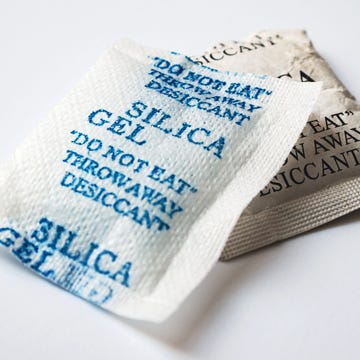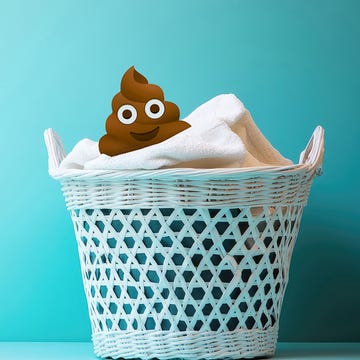While we do our very best to keep our homes clean and clutter-free, there’s one space that always needs to be ‘crammed and slammed’. The junk drawer gets filled with all kinds of, well… junk. It’s a safe space for miscellaneous items that don’t have a proper home, but we don’t want to let go of just yet – a ‘save for later’ drawer if you will.
The problem is a junk drawer will quickly fill to the brim with this mentality. Before you know it, you’re digging through just to find a battery with some charge. Or hopelessly looking for a working pen that hasn’t dried, amongst the many sauce sachets and old keys.
To help clear some space in this versatile and often chaotic drawer, we’re rounded up 7 things you can chuck right now. Raise your hand if you’re guilty of any of the following…
What to read next
1. Old batteries
What junk drawer doesn’t come with batteries? Some may be old and others may be new, having spilled out of the packaging which once kept them neatly together.
Sorting through these sounds like a faff, but it’s quite simple. With a dedicated battery tester, you can quickly check the remaining power and root out the duds.
Keep new batteries together in a labelled container to make finding them easy in the future. Old batteries can often be recycled at household recycling centres; check with your local council to confirm. Some high street retailers, like Tesco and Sainsbury's, also accept batteries for recycling.
2. Dried-up biros
With so many branded pens given away for free - from companies and hotels alike – they can quickly accumulate in the junk drawer. Between that and the many biros that are supplied in one multi-pack, there’s often more than a few kicking around.
And yet every time you need a pen, you have to scribble with four of five to find one that works! Get rid of your old, dried-up pens and reserve your junk drawer for usable ones; a drawer organiser can help to keep them together. You can switch to a reusable pen to save on waste.
3. Opened superglue
Superglue always comes in handy for one thing or another – it’s essential for many quick repairs! But we often only need a minuscule amount, and the remaining tube goes back in the drawer ‘just in case’ it’s needed again.
While this is sensible, it’s also a common cause for clutter. When the time calls for the superglue again, you remove the lid only to find it no longer works and has lost its stickiness. Once the seal has broken, the moisture in the air has taken its toll and rendered it pointless.
Of course, you shouldn’t throw away superglue after one use. Instead, place it in zip seal freezer bag and remove the excess air before sealing it and storing it.
4. Sauce sachets
How many times have you been left with unopened sauce sachets after a takeaway? You feel guilty for chucking them away (especially if you paid extra for them!) and end up throwing them into the junk drawer instead. Before you know it, there’s everything from ketchup to soy sauce sliding around, which will never be used.
If you’re determined to keep and use your sauce sachets, start by checking each for a best before date and remove any that have expired. Then for those that remain, move them to a small container and organise by date. Keeping them at the dinner table rather than your junk drawer means they’re more likely to be used too.
5. Loyalty cards
Every store seems to have its own loyalty card and points/reward system these days. You want to reap the benefits, but your wallet can only take so much, so they find their way into your junk drawer instead.
Most brands have an app which can be linked to your loyalty card, and often it can be added to your digital wallet too, to save you from digging it out from the drawer whenever you predict it will be needed.
For those you no longer need, cancel your account with the brands, then cut them up and dispose of them. For those you want to keep, there are card organisers you can buy to keep them together and alphabetised.
6. Screws, bolts and Allen keys
Whenever we assemble flat-pack furniture, there seems to be a couple of screws and bolts to spare. Perhaps the unit didn’t need mounting on the wall, and so you’re left with the fittings? Even if you do use every part, there’s still a set of Allen keys or some kind of supplied tool left over. What do we do with these things? They go in the junk drawer, ‘just in case’ they’re needed again.
But, the truth is these items are never likely to be used. If you’ve got a dedicated tool set, you may already have all the screwdrivers and Allen keys you need. And whenever you buy new furniture, all the parts will be supplied once again, so you’re only likely to accumulate more. Screws, bolts and Allen keys (which aren’t rusted or disfigured) can generally be recycled at a local recycling centre; check with your local council to confirm and to locate your nearest one.
7. Old keys
What should we do with old keys? It seems wrong to get rid of them, even if they no longer serve a purpose. So, they get thrown into the the junk drawer, where they will slide around and take up space for years to come, until we forget what they unlocked in the first place.
For old keys that are no longer needed, these can usually be recycled as mixed metals at your local recycling centre. Just make sure there’s no address or info listed on the key before you recycle it.
For any keys you need to keep, but seldom use, keep them together on a keyring or in a container, and use a label maker or tag to mark what each are for so you won’t forget.






















